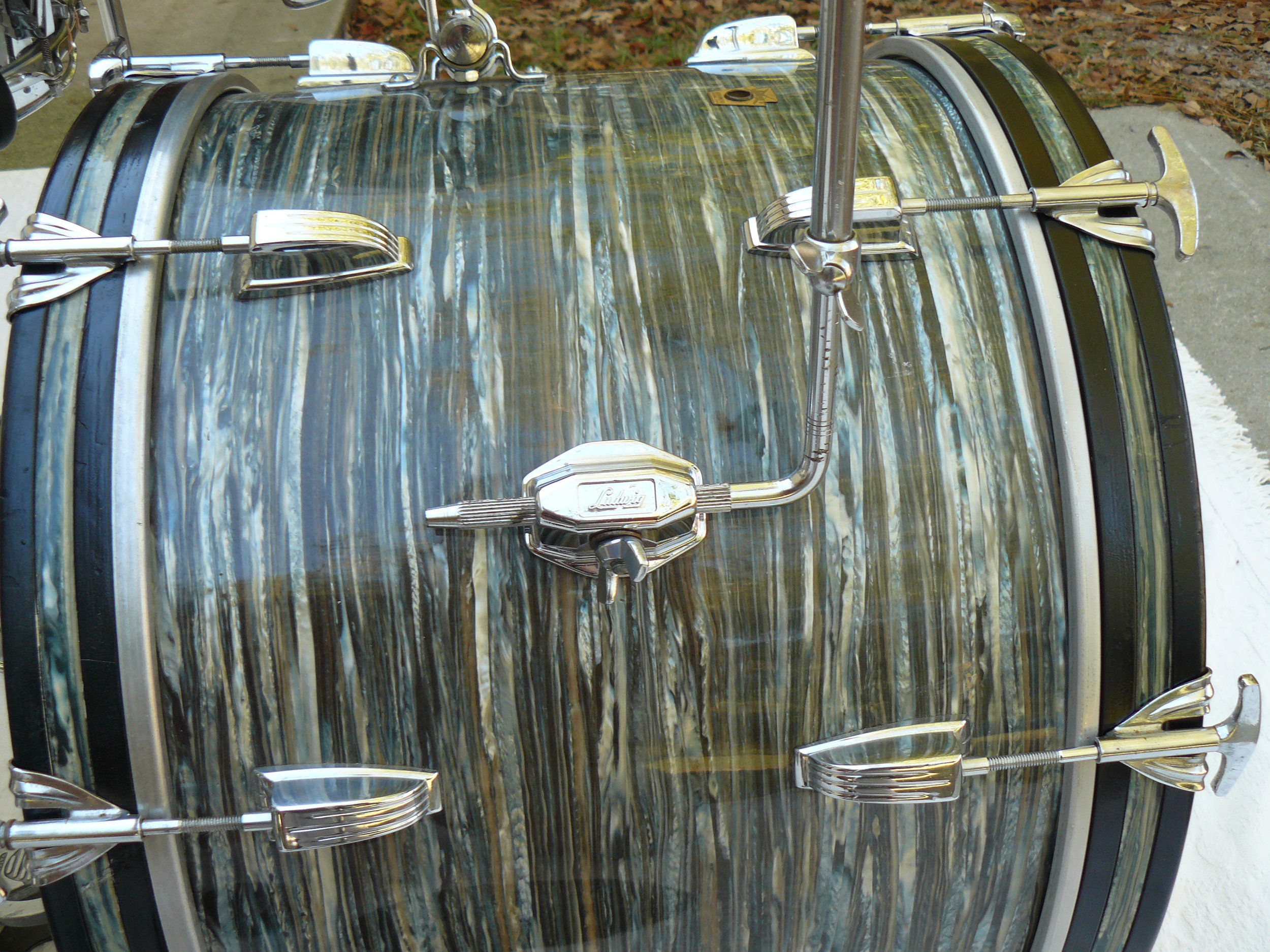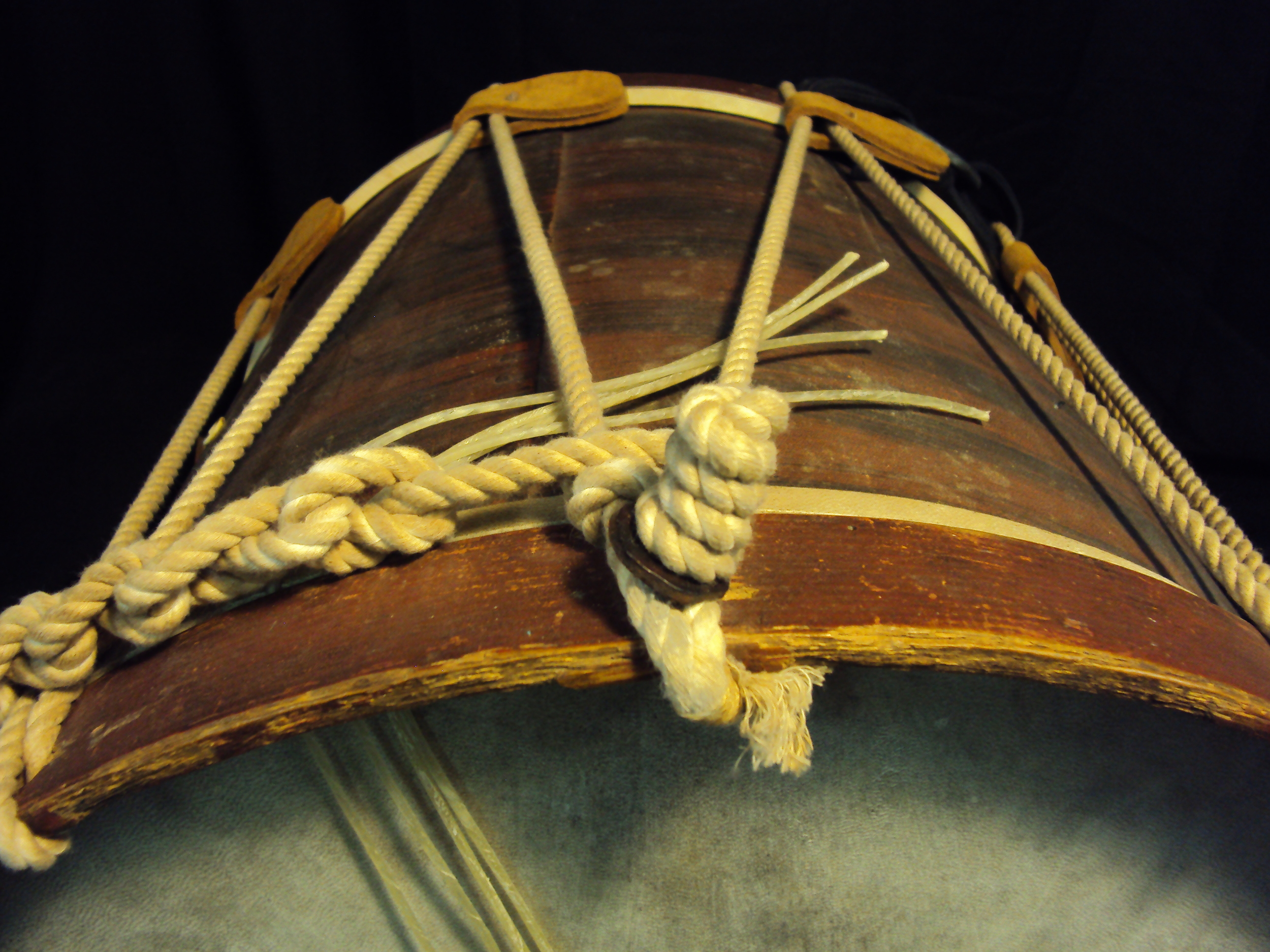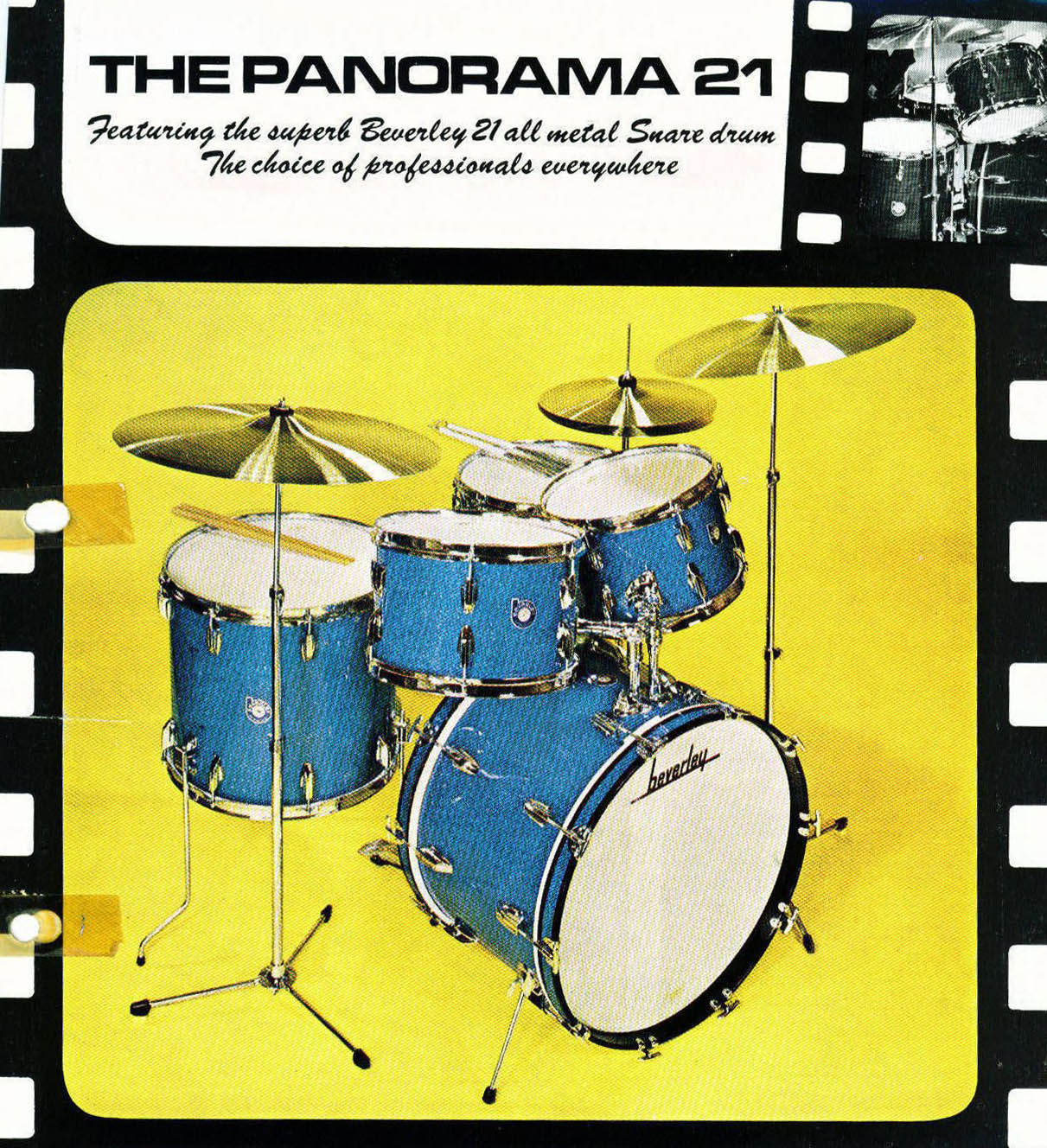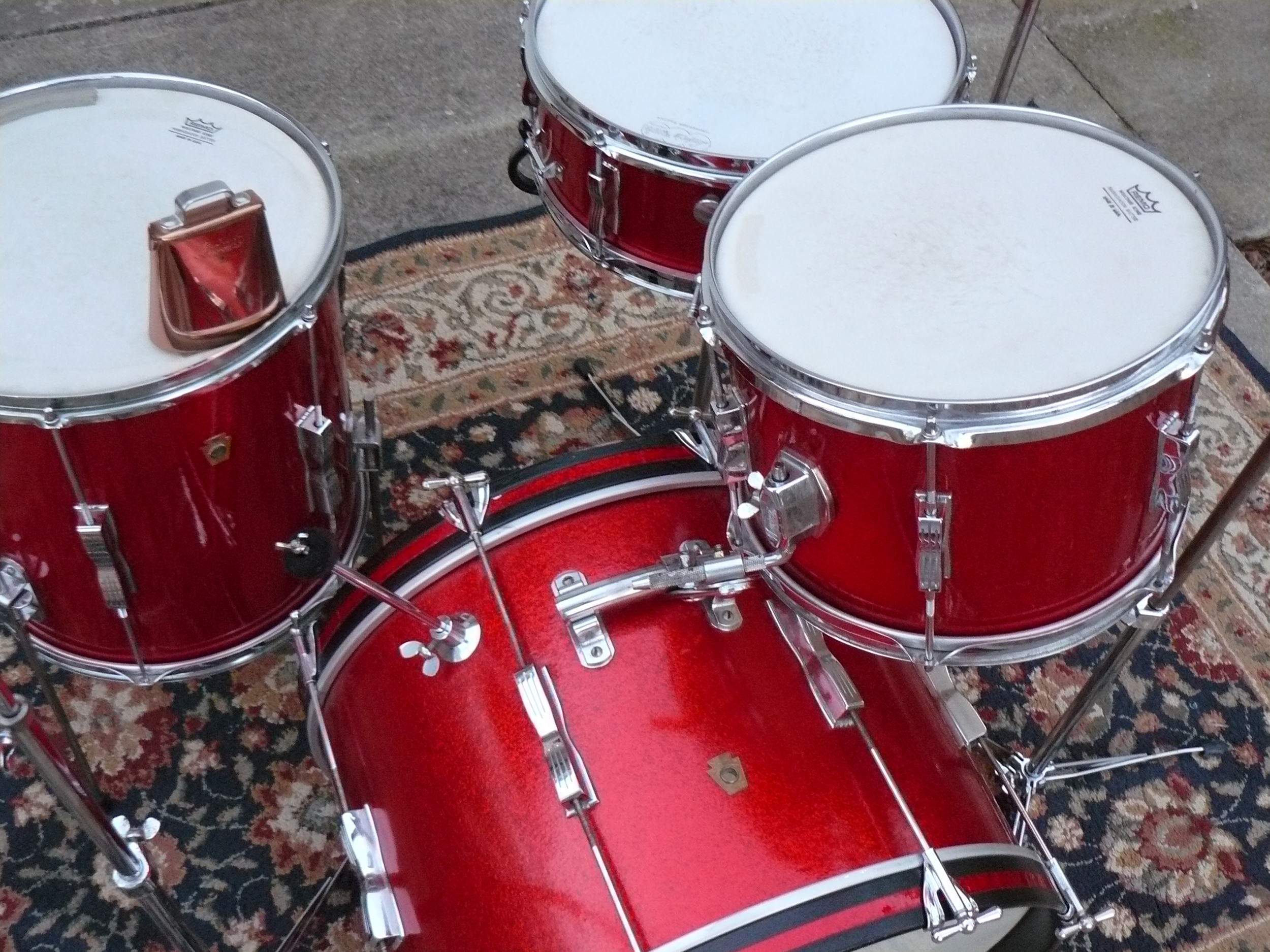Bob Campbell shoots great photos, period. Especially of drums and drummers. He got some great shots of both at the 2024 Chicago Drum Show in May. Too many to post here. They are uploaded on the NSMD Facebook page https://www.facebook.com/notsomoderndrummer Go check it out.
Read moreA rare French METJAZZ drumset !
METJAZZ is a french brand created just after WWII by Jean METZGER. He was working with his 3 sons, Henry, Jean Claude & André, and the workshop was located in SUCY EN BRIE near Paris. They made banjos and drums, and quickly knows a great success for their high quality instruments because METJAZZ was a very innovative brand, by design, and patented inventions.
Read moreCaptain Stephen Emory drums demonstration.
Hello, A couple of years ago I recorded to rope drums made by Captain Stephen Emory and posted it on YouTube. Please feel free to use it in your web presentation. It’s about as true and authentic presentation as we could muster. Hope you enjoy. Peter Emerick.
Read moreGuide to Vintage Drum Identification - Ludwig Lugs 1923 - 1965
The Imperial lug was also used on bass drums and tom toms in the late 1930’s. Single as well as double ended lugs were offered. A backing plate was usually installed between the lug and the shell. Bass drums were equipped with either standard length lugs or extra long versions.
Read moreKelli Rae Tubbs' Early Drum Set Video Series, Episode 1: "Woodblock"
Not So Modern Drummer welcomes old friend but new columnist Kelli Rae Tubbs. She knows her stuff about the early drum sets of the early 1900s and she is a great presenter and host. We will be featuring one or more of Kelli’s very well produced videos every month.
Read moreGuide To Vintage Drum Identification - Overview
If you have ever found yourself looking at an old vintage drum and wondering, “What year was this made?”, or “When did they first use this type of snare strainer?”, or “What’s the name of this unusual finish?”, then this vintage drum guide may be of interest to you. The purpose of this guide is to help identify the various types, models, and features of vintage drums during the years 1923 to 1965. I consider this period to be the “golden age” of American drum manufacturing. This
Read moreWhat's this worth? Leedy & Ludwig vintage kit
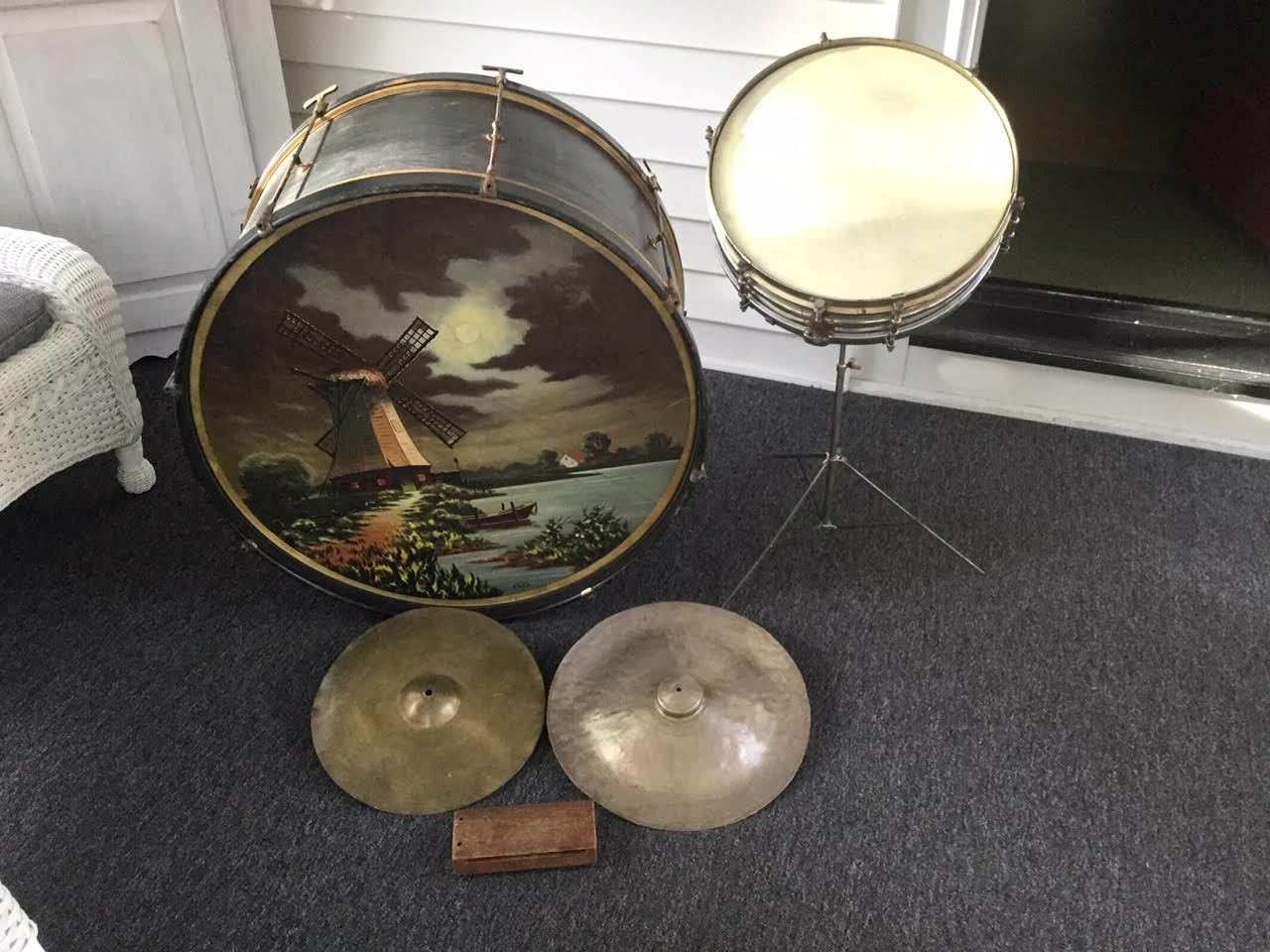

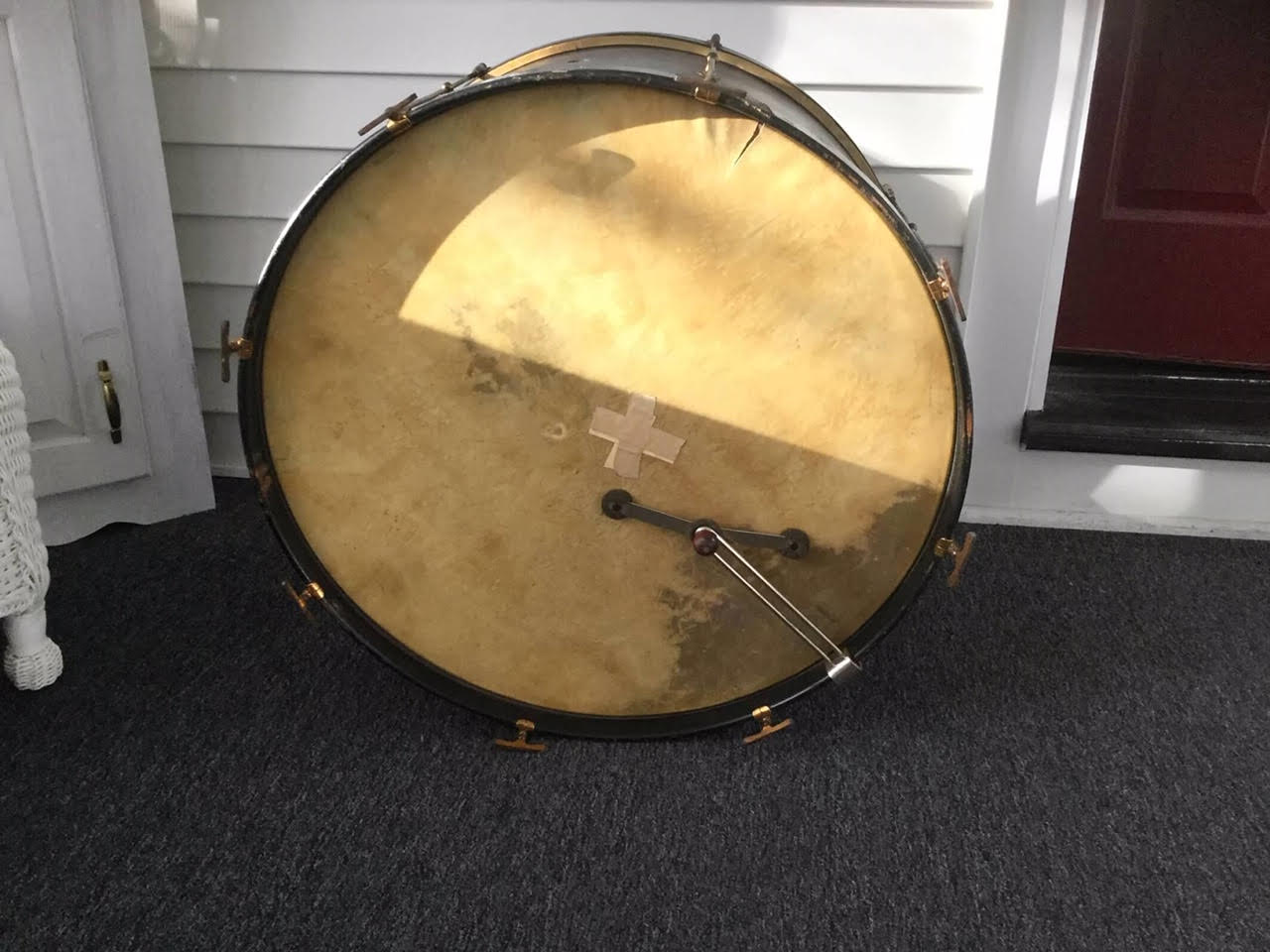
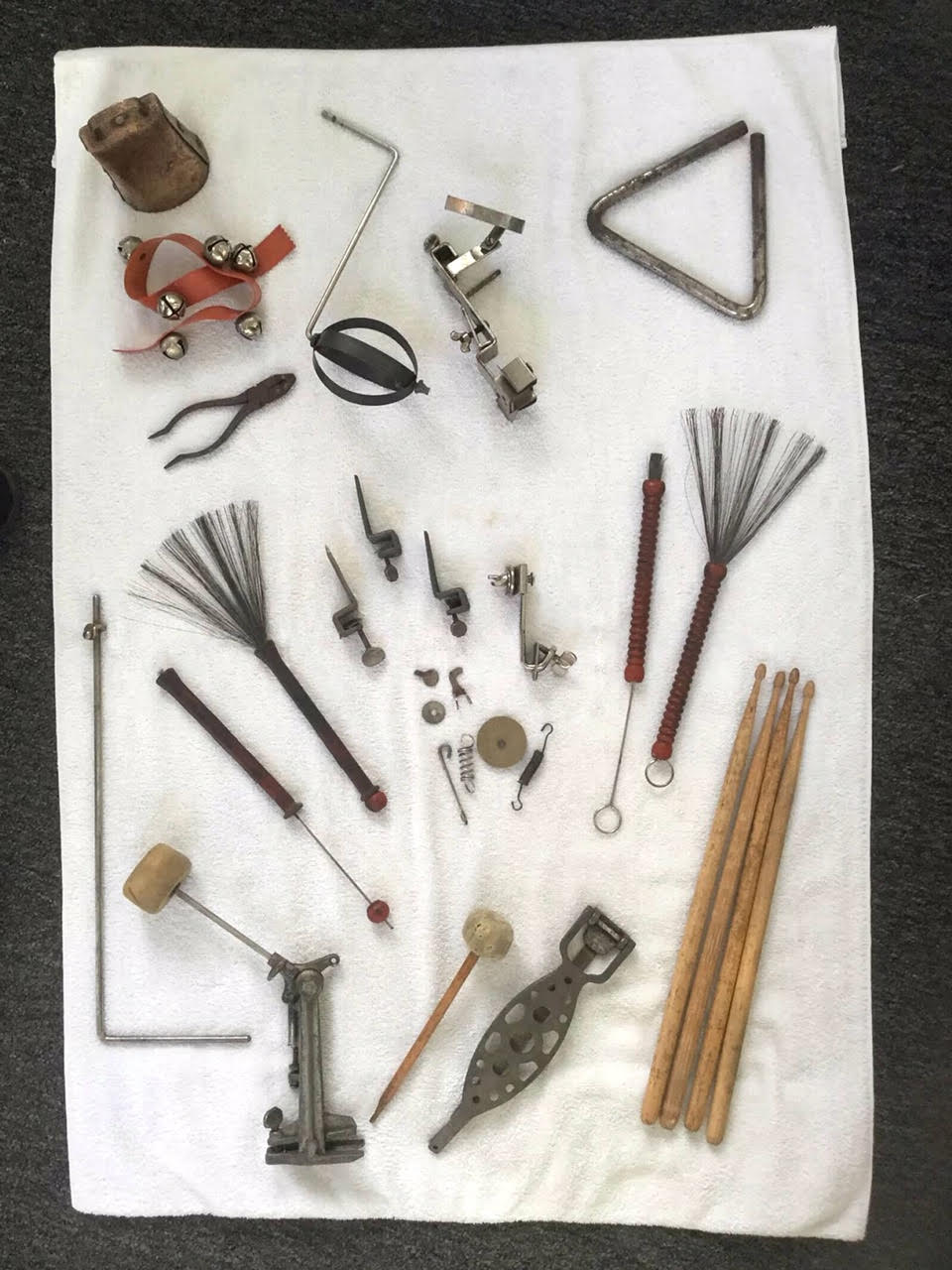


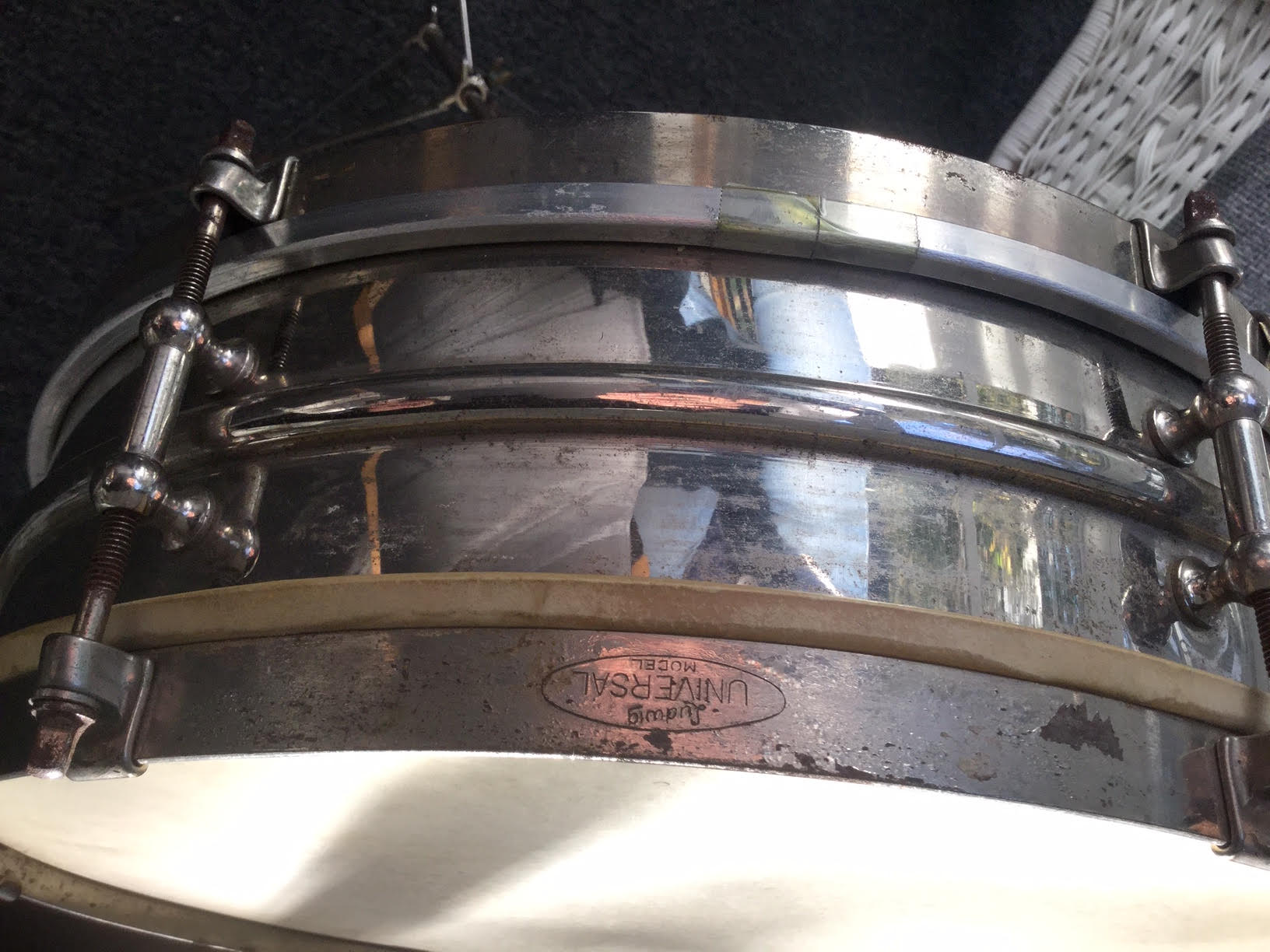
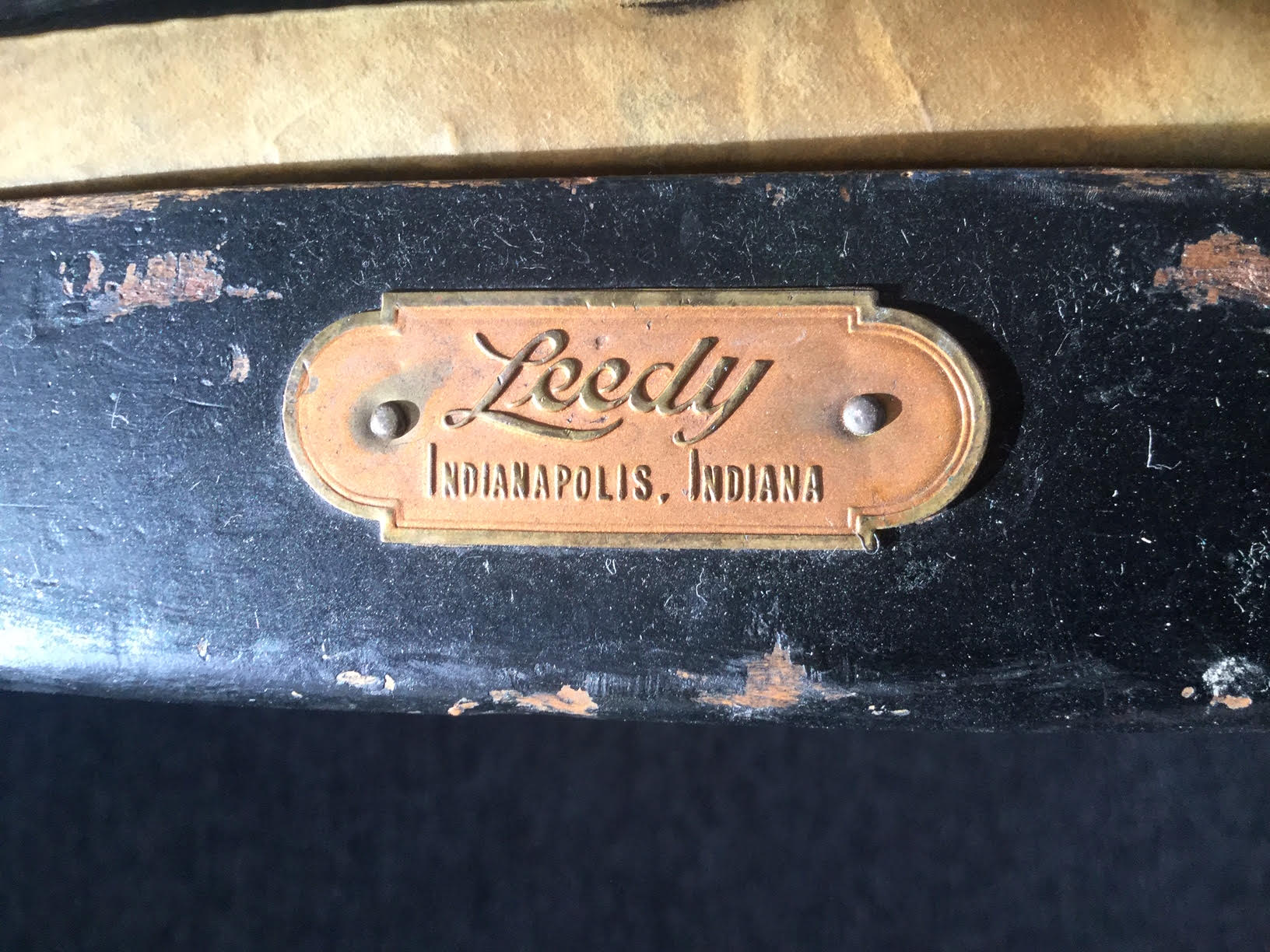

and more information about a Leedy and Ludwig drum set that I have. I have a few pictures I can forward to you that might help. It has a beautiful hand painted windmill scene painted on the bass drum. I believe it is from the 1930s belonging to my grandfather, I have a picture of him sitting at it. Very special.
Read moreEmile Boulanger/Duplex Snare Drum circa 1897
Difficult to date precisely, but this model appears in a 1885 catalog, and a patent of 1887 represents a perforated snare drum... This model must date from the late XIXth, circa 1897... Nickel-plated metal drum shell, 15'' x 5,5'' for dimensions, with 12 skeleton rods (as Boulanger called them... His patent which revolutionized drum history), with very fine tension rods in 5/16 ... This snare drum was made for street bands… This ultra rare snare is more than 110 years old, but after restoration it remains a pure jewel !!
Read moreBrian Hill - Drums of War - video.
This video was sent to us by Michael Outlaw of Outlaw Drums: On the Ropes with Brian Hill. Brian talks about Charles W Bonner, civil war drummer, and William S. Tompkins, drum maker. Brian is an expert in drum history. He is full of interesting anecdotes and facts on historical drums. If you love history, you need to check this video out. Brian Hill explains why he is so passionate about the drums he brings to the Museum Series On The Ropes.p
Read moreRemo Classic Fit Drumheads for vintage oversized drums prior to mid 60s
Looking for drumheads to fit your vintage kit? Remo listened and has developed the Classic Fit Drumhead for oversized drums made prior to the mid 60’s. The Classic Fit batter drumheads have a slightly narrower flesh hoop and step design yet maintains a standard outside diameter that does not interfere with the counter hoop. Available with Ambassador® Coated, Clear or Fiberskyn® film and sizes 12”, 13”, 14”, 16”, and 18”. Also available in a Snare Side Ambassador® Hazy, sizes 13” and 14”. The Classic Fit Drumheads will give you the classic sound and ease of head replacement you‘ve been looking for.
Read more1960s Ludwig Downbeat Drum Set in Oyster Blue Finish
The bass drum on this set has two sets of disappearing spurs. Maybe they added the second set to keep Joe Morello's bass drum from creeping off during his solos! :-)
Read more"Of Splendor and Elegance"
Formally part of the famed William Guthman Collection of Early Americana, this sturdy relic was hand-crafted and painted by Stephen Emory, of Rindge, NH.
Read more1920s George B.Stone & Son, Inc. 5x14 Blonde (maple) Master Model Snare
This drum was sold to me and documented to be in Near Mint Condition, I’d call it Excellent-Plus condition, no big deal either way. I’m told that the Blonde, solid maple shell is pretty rare as most of the Master Models are Black Lacquer. Noted collector, Bill Wanser told me that he has never seen a Blonde MM. I’m told that Stone Master Models are highly sought after by symphony and orchestral percussionists.
Read moreNashville Drum Show 2014 Follow-Up
Thanks to all of you who attended and/or exhibited at the Nashville Drum Show in September. For those of you who missed it we have a great pictorial article with photos from Rick Malkin and Bob Campbell. The show was a great success. There were three times as many exhibitor and vendor booths as the prior show and double the attendance. We hit a tipping point with the show this year and I think we may have to move to a hotel/convention center next year. Also, the drum industry gave a lot of credence to the event this year with many unveilings of new products including Gretsch’s new made in the USA Broadkaster kit that was introduced by Fred Gretsch and the guy who builds the Gretsch drums, Paul Cooper. Mothertone/Sleishman’s inverted bass drum set was demonstrated by Roy Wooten along with the Wooten Brothers Band.
Read moreMay 2014 - Everybody's Looking for Something
“Sweet dreams are made of this. Who am I do disagree? I traveled the world and the seven seas. Everybody is looking for something.”-The Eurythmics
What is it about vintage and custom drums that consumes us so? Tony Williams said, “I play because I must.” It’s the same with us drum addicts. We musicians are sensual people and the drums appeal to so many senses – They are art to our eyes, sound and music to our ears, a physical pleasure to touch, and the most addicted of us of even get off on the smell of the interior of a drum or the scents of the polishes and cleaners that we use to restore them. I love writing about them and I love talking to other drummers about the drums and about themselves. It is a very worthwhile pastime.
So, everybody is looking for something. I’m looking for an 18” x 14” Gretsch bass drum in rosewood finish; any Jasper shell model between the sixties round badges and the nineties. I’m also looking for any scrap pieces of purple peacock satin flame wrap.
Chris and I launched the new version of Not So Modern Drummer just about six months ago now. We hope that you've enjoyed the ride so far - and have found what you've been looking for on the pages of our publication. Our ears are open - comments, suggestions... let us know! We'll be at the Chicago Drum Show next weekend - please stop by our booth and say hi.
OK - enough talking - on to the May articles!
George's Signature
(330) 338-6035 george@notsomoderndrummer.com
Late 1960s Beverley Drums
This month I’m looking at the rather lovely Beverley drums of the late 1960’s / early 1970’s. Originating from the North Yorkshire town of Beverley, ownership of the company changed hands a few times between their appearance on the market in the 1930’s and their demise in 1979. These drums really do represent some of the finest sounding English drums, in my opinion, the nicer drums produced between 1968 and the early 1970’s.
The 1969 catalogue marketed Beverley drums as ‘The Sound Of Success’ although they were viewed in the UK as lower quality in comparison to other brands. The shells, however, were produced in the Premier factory in Leicester (UK) and were 3 ply birch or 3 ply mahogany with beech reinforcement hoops (identical to the Premier drums of that era).
They differed from Premier drums in many ways, most notably the lugs; rather than one piece, all drums featured single lugs top and bottom in a design not dissimilar to the American market leaders. The finishes of the drums were different too, with the black Oyster the closest in comparison to Ludwig’s famous ‘Beatles’ kit of the same period. Other finishes included nice glitters (Champagne, Blue, Red) and some very subtle shimmers (red, blue). All drums were fitted with triple flange hoops, the bass drums having disappearing spurs and disappearing shell-to-shell tom mounts. The badges were silver circles with a blue ‘b’ in the centre.
The configurations in the 1969 catalogue are as follows;
‘Galaxy 21’ set – 22x17, 13x9, 16x16 with Cosmic 21 snare; ‘Galaxy 650’ set – 22x17, 13x9, 16x16 with wooden 6050 snare; ‘Panorama 21’ set – 22x17, 12x8, 13x9, 16x16 with Cosmic 21 snare; ‘Panorama 22’ with 2 bass drums and wooden snare.
Bass drums were available from 18” up to 24”, so we do see some variations in kit configurations, which are a little rarer to have survived in good condition.
Overlooked mainly in UK at the time the drums gained the most popularity in the USA and Holland. Some argue that they were a cheaper alternative to Ludwig drums, whilst looking (and sounding) very similar. These drums always surprise me when they come through my shop, in a good way. Big, warm tones from the bass drum and floor tom, especially the African mahogany shells. The birch shelled kits are a good too, accurate in tone with good projection. The bass drums on these sets never fail to impress me - a 22” Beverley bass drum sounds like a 24” with your eyes closed!
While some never doubted them, there is a growing respect for Beverley drums in the UK and any kits I have in stock don’t stick around long. The most Recent went to a customer in Switzerland who says this:
“I just love my 60s Beverly Blue Label kit. It has a vintage feel but a big deep resonant sound that really punches if you want it to, but is subtle enough for quiet performance situations. I feel right at home on this kit playing rock, blues or country. Its old-school for sure, but some things never go out of style” HJ
The ‘Cosmic 21’ snare drums that came with these kits are worth a mention on their own, so I’ll cover those next month.
I found this link online to some Beverley kits in use...
Red Sparkle Ludwig Club Dates
These drums have a beautiful red sparkle finish as you can see in the photos. The sizes are typical for this era Club Dates. The bass drum is 20"X14", the floor tom is 14"X14", and the mounted tom is 12"X8". The snare with this set is a matching Pioneer 14"X5". Acrolite snares were offered with this kit beginning in 1966. There is cymbal mount on the bass drum that is factory placed near the batter head side pointing toward the floor tom. Also the small brass cowbell was featured with the set. They are light weight three ply shells with reinforcement rings. The unique characteristic about these drums is the center shell mounted "bowtie" lugs. Dual tension is achieved by long tension rods. The shells are painted white inside and have Keystone badges. The floor tom has "clipper" legs. The legs are straight and the holders are spring loaded with a push button adjustment. The mounted tom is attached to the bass drum by the "old faithful" rail type single tom holder.
Now the story. I was talking to a fellow drummer who told me he had just bought a new Tama drum set. I asked him what he had done with his old set? He said, "they are really old, in pretty bad shape, and they are beginner Ludwigs." I of course inquired about the "old, bad shape, Ludwigs." He told me I could come over and see if I wanted them. I asked him if right now would be too soon. If possible, go the minute you hear about a set, because things can happen so quickly and you will lose your chance.
He had let them get in very poor shape. They had no resonant heads or hardware, also missing were the front hoop and rods on the bass drum. A screw driver was employed as a bass drum leg. 30 years of dirt and grime was coating everything. I asked him," how much will you give me to take them away". He was mildy amused, and then said, I'll take $50.00 for them". Without haggling I gladly paid and loaded them up.
I spent a good bit of time and money putting them back in shape, but they are worth it. I even got some flat base hardware with the deal.My friend, Butch Braddy, drum dealer at a popular Georgia music store chain was asked to provide some authentic vintage drums to be featured in a movie. Savannah, Georgia has become a favorite spot for many movie makers to shoot films. Butch and I provided the drum sets for the movie about the CBGB Club in New York where many famous bands made their debut. This set is in the film. I haven't actually seen the film yet, but I did watch the trailer, and can't wait to see these Club Dates in their starring role.
Keep looking for those great vintage drum deals.











